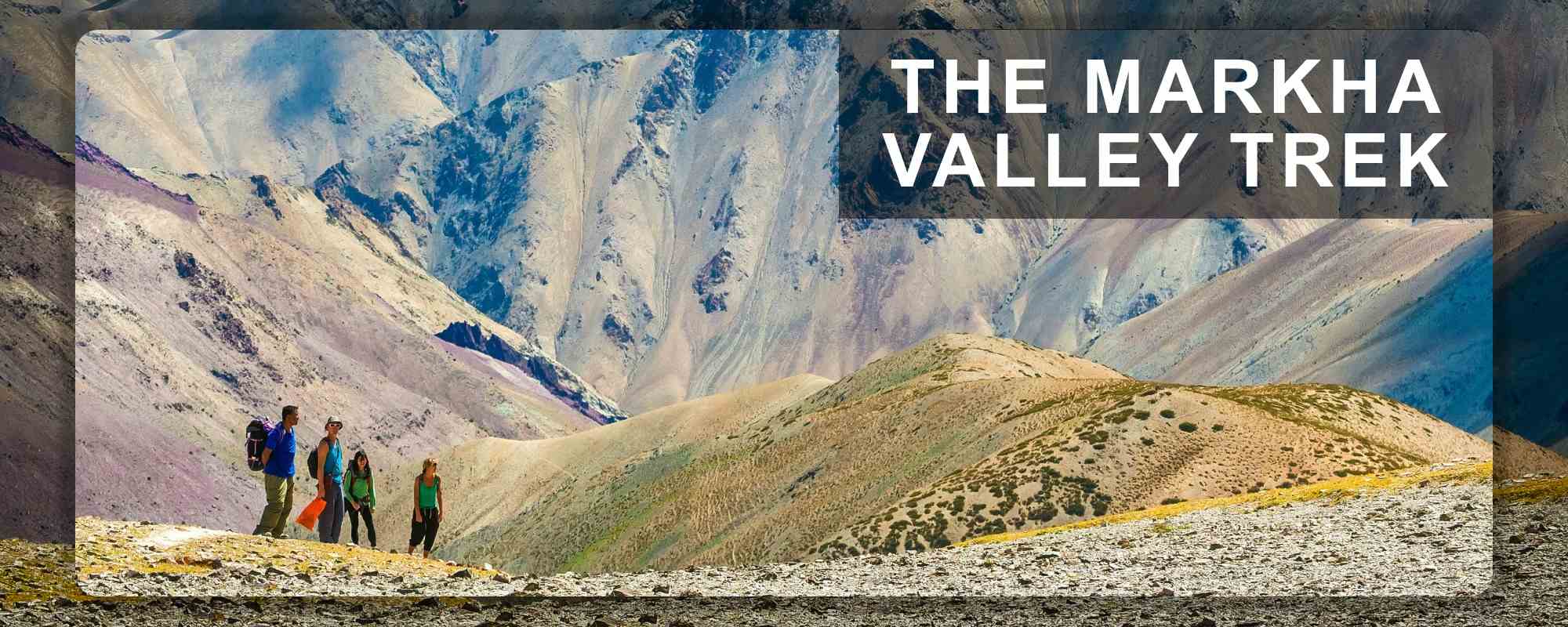
South of Leh town, a lovely valley is traversed by the trail as it follows the Markha River.For a variety of reasons, the route has grown somewhat popular in India. One of the few multi-day treks in the area that can be completed independently by sleeping in homestays, it is simple to access, easy to navigate, and one of the few.You may get a closer look at the amazing vistas that surround Ladakh on the Markha Valley walk, which is extremely magnificent. Every kilometer along the walk, the hue of the rock is different, and the communities along the valley bottom resemble oasis.It was also a lovely chance to gain a glimpse of the locals' customary way of life and cultural practices.Any individual traveler can plan and walk the Markha Valley trek in Ladakh with the assistance of this guide.
Don't be put off by the fact that the Markha Valley walk is one of Ladakh's most well-known. You're much more likely to come across Tibetan shepherds along the way than other tourists, and the trail is far from a hiking superhighway.This trek is intended for people who just want to "be" in nature and experience the strength of the world's tallest mountain range without the commercialization and crowds of the Himalayas' more well-known routes.

According to Kashka Lantis, a Ladakh expert with Exodus Travels, a company that specializes in walking. She exclaims, "Well, popular for Ladakh, that is, because this is a traditional Himalayan journey. It provides an incredible sense of being alone in the forest. There aren't as many trekkers in Ladakh as there are in Nepal's more popular paths, which is the prevailing perception of the region.Some of the most traditional communities in the Indian Himalayas may be found here, including a string of tiny mud-brick villages that are incredibly traditional and hide countless monasteries and temples, earning the area the nickname "Little Tibet" for its bleak beauty and dramatic aridity. And it is these populations that rely mainly on subsistence farming and the brief summer trekking season for their livelihoods. In exchange, you receive a special chance to meet local ladies, purchase their crafts, and sample authentic Ladakhi food while getting an insight into the realities of life in these isolated mountains.

The Markha Valley journey is mostly obvious, and getting lost all the way to the Kongmaru pass would be challenging. Because there were so many people on the trail, there was always someone to ask.
However, beyond the pass, there were a few random routes darting here and there on the way down, as well as some trails that appeared to be old and recently damaged. So, it's best to stick to the one with evident tracks and animal droppings, as this is the one that the locals use and are most familiar with.Maps show the paths as well. Me, but I'd advise follow the footprints or dung, as they're more likely to be accurate. Landslides and floods can ruin trails year after year.



This is a challenging hike, equivalent to climbing to Everest Base Camp, according to Kashka Lantis, so you should be confident in your physical fitness. You really do need to be comfortable with rocks and uneven ground because there are a few river crossings on the walk.The Markha Valley has similar difficulties to other Himalayan treks in that its elevation is a major obstacle. Even the most athletic trekkers will find the hike exhausting as you traverse two astoundingly high passes, Ganda La at 4,970 meters and Gongmaru La at 5,286 meters. Most hikers may experience some effects at this altitude, such as headaches, nausea, and shortness. Acclimatization is crucial, so you'll spend a few days in Leh taking day hikes before the journey and a few shorter days on the trail to help you get used to the surroundings.
Just as vital as your aerobic fitness for the climbs is strengthening your knees and legs for steep, rough descents. And if you want to conquer the Markha Valley, prior high-altitude hiking experience is also crucial, as Kashka Lantis explains.You must anticipate how your body will respond to the altitude and how it will affect you. Since this hiking region is much more distant than some of the other, more popular ones, it is more crucial here. "Of course, we have the infrastructure and support in place, but there isn't much infrastructure for tourists."
The dinners, at least, were excellent in terms of the food. Homemade food was made using ingredients that were farmed nearby, typically rice, dahl, and veggies; however, they also prepared stew and tingmo.
You never had breakfast because it consisted of anything more than tea and some chapatti, but you did carry a lot of snacks. The packed lunches provided by the homestays for hikers were always the same: a sandwich, a boiled egg, one or more boiled potatoes, a juice box, and a chocolate bar.
Roopkund Trek Itinerary
The Markham Valley's trails are essentially closed from October to March due to the region's severe, severely cold, and snowy winters. Travel in July and August for the greatest trekking conditions, when the weather is moderate enough for cozy nights spent beneath the stars (reaching the mid-20s °C during the day and approximately 10 °C at night).

This trek requires no technological expertise. The track is also quite well defined, so you won't need a guide. However, a map is recommended, though you can get by without one. There are several difficult sections and side paths, so consult with fellow trekkers and locals.
There are communities along the road, and they all have homestays. In the summer, teahouse tents are set up along the trail. This is what distinguishes this journey as a tea-house trek.
No, no permits are required. If you start at Spituk, you must pay forest entry fees
Copyright 2012-2025 Indiamap Digital Private Limited. All rights reserved. Privacy Policy | Terms of Use